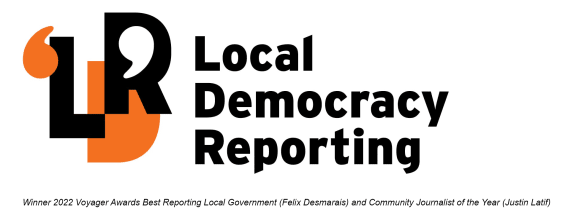
Marlborough Airport chief executive, electoral officer (local body elections), and council economic, community and support service manager Dean Heiford at the Marlborough District Council building. Photo: CHLOE RANFORD / LDR
Online voting might still be the answer Marlborough is looking for to increase participation after concerns were raised by councillors about the low voter turnout in the most recent election.
Marlborough had its lowest voter turnout in at least 25 years for October's election, with just over 44 percent return - something electoral officer Dean Heiford described at the time as disappointing.

Heiford told the council's economic, finance and community committee on Tuesday the turnout was low across the country - except for some "very, very small" rural councils - possibly because of their size and connection with their communities.
It prompted committee chairperson Jamie Arbuckle to raise his concerns about the drop in voter turnout - who thought by having such a low return rate, the community was not accurately represented.
Deputy Mayor David Croad asked Heiford who lead the charge in trying to turn the numbers around.
"Do we lead the charge as a council individually in Marlborough to look to try and turn that trend around, or is it an Electoral Commission thing? Or a combination of the above? How does this work?"

Marlborough deputy mayor David Croad asked who was responsible for increasing voter turnout. Photo: Stuff
Heiford said it was a combination of "many factors".
"The Justice Committee does a review after every local government election, they're doing quite a comprehensive one at the moment and there are a number of issues that the sector has been looking at over the last 20 years in terms of how to improve turnout.
"One of the issues that you as councillors ... and even us as staff, is getting people to support the democratic process and understanding what voting in local government means.
"What you have to remember is that a number of our citizens only think of council when they get their rates bill.
"It's actually getting people to understand the investment the council has, especially us as a unitary authority, with both regional and territorial functions."
Meanwhile, a draft report from the Future for Local Government Review, released in October last year, did recommend a raft of changes to increase participation in local elections, improve the quality of councillors and to ensure councils work better with mana whenua.
Heiford thought there had "perhaps" been an underinvestment in promotion of the election.
"We don't get a lot of central government funding, if any, to promote it," he said.
"But one that's dear to my heart is civics education, in terms of young people understanding what voting actually means.
"If you get people voting the first or second time, they tend to vote for life."
But he said the key one was online voting.
Marlborough District Council had hoped to use an online voting trial to up voter count for the 2019 local body elections, but shelved the idea due to the likely $4.2 million cost. At the time, it said it would revisit the idea after the 2019 elections.
"We probably need to change the way that we allow people to engage in ... the process, by giving them another platform to do it through," Heiford said.
He said he also wanted to assure councillors they had a very "tight process" when it came to announcing election results.
It came after the final count for the election in Marlborough saw two seats changed from the preliminary results that had been announced earlier.
It meant Cyril Dawson and Mike Insley both missed out despite being told they were elected during preliminary results.
He said they were always careful to tell candidates the results were preliminary. But, the extent of the "swing" in results was something he and fellow electoral officer Mike Porter had never seen before, Heiford said.
Recent turnouts in Marlborough (%)
- 2010: 56.53
- 2013: 54.68
- 2016: 53.66
- 2019: 48.83
- 2022: 44.13
Local Democracy Reporting is Public Interest Journalism funded through NZ On Air





